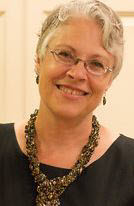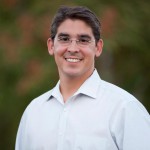
Every week until the election, we will have a question for the DJUSD School Board Candidates. We have a word limit of roughly 350. This is the final question.
Please also see the Vanguard Candidate’s forum from Sunday, September 18.
Question 7: How can we solve the achievement gap within the next generation of students?
 Susan Lovenburg
Susan Lovenburg
This question acknowledges that closing the achievement gap involves “we,” – the combined contributions of many – and I’m proud that our board and the district have not shied away from accepting responsibility for our part of the solution. In a series of presentations throughout this past year, we developed a solid understanding of the programs and strategies already in place for our at-risk students, and what challenges still exist for them. There are many.
The era of No Child Left Behind illuminated achievement gaps, but it also taught us what does not work to close them – state intervention, scripted instruction, and punitive accountability measures. Based on those lessons, public education advocates are taking a new approach. We’re implementing the Common Core which provides deeper, richer and more relevant instruction for children, and embeds differentiated instruction in its pedagogy.
We now define student success more broadly than academic achievement. We strive for social and emotional well-being, as well as college and career readiness. Strong community partnerships help close the opportunity gap for children and families.
International education reformer Michael Fullan, working closely with the California CORE Districts, establishes a framework for action in Coherence: The Right Drivers in Action for Schools, Districts and Systems (Thousand Oaks: Corwin, 2016):
- Focus Direction: Set a small number of ambitious goals directly related to student achievement, mobilizing the whole organization to support the moral purpose: improving society through improving educational systems.
- Cultivate Collaborative Cultures: Foster collaborative cultures focused on instructional improvement within and across schools, as well as between schools and the larger system.
- Deepen Learning: Improve teaching and learning at all levels of the system using a capacity building approach.
- Secure Accountability: Introduce transparent and non-punitive accountability approaches that focus on student success and acknowledge responsibility for continuous improvement.
In Davis, we’re investing critical resources in teachers and technology – enhancing classroom instruction with more creativity and critical thinking to meet the learning needs of every student. With focus and leadership from the board and the continued good work of Davis educators, families, students and community members, we are poised to close the gaps.
 Bob Poppenga
Bob Poppenga
There has been a tremendous amount written about the achievement (or opportunity) gap over the last several decades. The achievement gap is the persistent disparity in academic performance between groups of students, with the groups most often separated into minority and disadvantaged students (primarily Latino and African American students from low income families) and their white and Asian American counterparts. In a university town like Davis, the case can be made that the achievement gap is more related to parental education than to family income given our population of lower income graduate students with families, although precise data is lacking.
Over the last year, the School Board has devoted considerable time to better understand the achievement gap in our community. Steps have been taken to try to address the gap (see October 6th Board meeting agenda under VII.a.l). However, our programs need to be evaluated regularly for effectiveness and successful programs should be available to any at-risk student regardless of home school.
We do need to invest in quality early educational programs. There is good evidence that if a child is reading at grade level in 3rd grade, ultimate school outcomes are better. Quality preschool programs close the gap, but the closure is not sustained. Thus, early educational programs are necessary, but by themselves are insufficient to solve the problem. I support the Yolo County Board of Education’s effort to modestly increase the county sales tax in order to offer quality preschool for every child in the county.
We do need to have high expectations and a challenging curriculum for every student. Evidence is clear that if teachers expect more from their students, students achieve more. Struggling students should receive extra help when they need it. This is an area where tapping in to our large and diverse university student population for tutoring help is important. Extending instruction time beyond the traditional school day (i.e., after school, weekends, summer) is essential for many students if serious progress is to be made. I would work to find quality after-school and summer program options for at-risk students. The District, City, UCD, community non-profits, and the private sector should work collaboratively to make opportunities available.
We do need to recruit and retain a highly qualified and diverse workforce. This was discussed in an earlier Vanguard question and doesn’t need further elaboration here. It is important that each at-risk student find a teacher or staff member that they can connect with at school on a regular basis.
We do need to make sure that there are no artificial or unrecognized barriers to participation in extracurricular activities by at-risk students. For example, lack of transportation and lack of access to technology are two possible impediments to participation.
Ultimately, I don’t believe that our schools can single-handedly close the achievement gap, although they need to play a significant role. In my view, the achievement gap will be a topic of discussion for the foreseeable future and will not be fully addressed until we find solutions to income inequality and inadequate funding of public education in California.

Alan Fernandes
Our Board has made closing the achievement gap a top priority. The first school board meeting of each month has been dedicated to reviewing district data and programs related to closing the achievement gap. We have been presented with the fact that 50% of all African American and Latino children in the district were assessed below state standards. This is unacceptable.
We must continue to study as a district the most effective strategies to improve our schools. Over the next four years, I will push for continued efforts that focus on each child’s needs. This may include increasing preschool, providing additional academic supports, and reducing class sizes.
One of my top priorities as a Board Member has been addressing the achievement gap and providing additional support to our struggling students. There are over 8,600 students in our schools, and they all deserve an educational system tailored to their individual strengths and needs. Meeting that enormous challenge requires collective engagement—with the students themselves, as well as with teachers and support staff, parents, and with the Davis community as a whole. As a consensus builder with real experience in bringing diverse groups together I am equipped to take on the challenge of narrowing the achievement gap.
My focus has been and will continue to be adopting policies and pursuing initiatives that build an inclusive culture of collaboration throughout our schools.





http://www.nea.org/home/13550.htm
My son plays AYSO soccer and really enjoys it. He is not the best player on the team but the coach and the other players help him and he gets better. Never has the coach ever come to me and said ” I want to talk about your child’s ‘Athletic Gap'”. Good thing for him too.
Bob P has the right idea here by questioning the premise of “Achievement Gap”
quielo wrote:
> Never has the coach ever come to me and said ”
> I want to talk about your child’s ‘Athletic Gap’”
That is because (unlike many left leaning people in education) your son’s coach knows that there will ALWAYS be a “gap” between people in both academics and athletics.
Even “identical” twins that have the same parents raising them have a “gap” in both academics and athletics. No matter how hard you try even kids that are (genetically)”exactly” the same with the same DNA will not always have the same test scores, GPAs, marathon times and score the same number of goals per game.
If “identical” twins have a “gap” it seems silly to think that there will not be a “gap” between a kid who’s parents are both 140 IQ UCD professors that have hired a grad student to tutor him five days a week after school and a kid who’s parents are 90 IQ laborers that let him do nothing but play video games five days a week after school…
SoD: That is because (unlike many left leaning people in education) your son’s coach knows that there will ALWAYS be a “gap” between people in both academics and athletics.
I’m fascinated by the way you impose a political lens on this issue. What brought about the current intense focus on the achievement gap in this way was the mandate of No Child Left Behind (NCLB), which was passed with bipartisan support. One favored aspect of that policy among many political conservatives is using the standardized test scores to “hold teachers accountable” and “get rid of bad teachers”. The bad teachers are deemed to be the ones who can’t close the achievement gap, as defined by standardized test scores. Do you also think it’s a travesty to identify “bad teachers” based on the standardized test scores of students?
wdf1 wrote:
> I’m fascinated by the way you impose a political lens on this issue.
Most (but not all) on the left tend to focus on the “achievement gap” while most (but not all) on the right are focusing on “helping the kids who are getting left behind” (and unlike many in Davis don’t have a problem with also helping the smart kids get even farther ahead and increasing the “achievement gap”)…
> Do you also think it’s a travesty to identify “bad teachers” based
> on the standardized test scores of students?
I do not want to punish teachers just because they are stuck with kids who are “dumb as a box of rocks” but I think we should look at testing to try and make teachers better. More often than not when two teachers in the same school teaching the same grade have different results year after year it is because one teacher is better…
SoD: Most (but not all) on the left tend to focus on the “achievement gap” while most (but not all) on the right are focusing on “helping the kids who are getting left behind”
Many of the school staff that I know actually express their work as, “helping the kids who are getting left behind.” That’s also how I have also viewed it. I guess that makes me and the teachers as people on the right. Thank you for straightening that out. Unfortunately, I won’t be voting that way on the top of the ticket on Tuesday.
did i miss something or did alan fernandes say absolutely nothing?
Alan’s strength is not trying to come up with ideas of his own but instead trying to find common ground to move the board forward. During the debate he was the only one to say “this other person has a good idea and I will support that”
They all missed desegregation that has been shown to improve outcomes for minorities without negatively impacting majorities.
The current board is also resistant to desegregation. When offered an opportunity to diversify the gate program the current board said no to filling a third section with kids from underrepresented minorities who scored at the margin. They held the line on their dogmatic assault on gate and made it less diverse even though there is ample evidence that the students who score at the margin are the one’s most likely to benefit the most from the program.
Also the current board has made no attempt to desegregate Montgomery probably for fear of a backlash against doing what that would require. A previous board closed Valley Oak a school that had done a great job of dealing with the achievement gap but, I believe, one of the current candidates was on that board.
Susan Lovenburg was not on the board that voted to close Valley Oak but she supported the closure as a candidate and oversaw the closing of the school and the repurposing of the site to preclude the creation of a charter school there.
Thanks for the background, Misanthrop.
I had at least one child in the GATE/AIM program from 2003 – 2014, attended numerous committee meetings, read numerous articles, etc, and never saw any data or write-up that AIM helped kids with IQs at the cut-off more than kids at with the highest scores, either on average nationally or specifically in Davis. What I did read –and was observed in my children and others’–was that the best predictor of success with the GATE cirriculum is a high OLSAT score. To make a long story short, my child who had a marginal GATE score, but qualified via a nonverbal test was missplaced.
At the margin in this case would be near the 96th percentile.
Here is an excerpt from an April 16, 2016 New York Times article that lays it out:
“Why Talented Black and Hispanic Students Can Go Undiscovered”
“But the separate classes did produce enormous, positive effects for children who were high achievers but did not qualify based on the I.Q. test. A quirk in the rules helped these children: Broward requires that schools with even one child who tests above the I.Q. cutoff devote an entire classroom to gifted and high-achieving children.
Since a school in Broward rarely had enough gifted children to fill a class, these classrooms were topped off with children from the same school who scored high on the district’s standardized test. These high achievers, especially black and Hispanics, showed large increases in math and reading when placed in a class for the gifted, and these effects persisted.”
Jose Granda’s point validated.
Granda has been right on this issue. The problem is that his views on taxation and the budget make him non-competitive in the election.
To me, then, there needs to a qualifier. “High-acheiving” children who score at the margins see their scores go up.
Here is the thing- the child who does not have the high acheiving temperament or inclination and is put into the high achieving environment–if the class’s competitive behaviors are not directed and managed by the teachers and administrators, which is the Davis way–that child does not conform to the profile. The introverted child who scores at the margins is not helped. Every ethnicity has introverts.
As I relect on this post, I realize that I have a slightly different achievement concern/definition for students. I care about engagement and graduation. I hoped GATE/AIM would engage my children enough, so they would simply graduate. I also hoped they would have respectable grades and test scores, ones that would keep their options open.
GATE is not for everyone. DSIS is better for many who fit that profile.
For clarity, Don… are you saying those on the “introvert” side of the spectrum should be directed towards DSIS, rather than GATE/AIM? All aptitude issues being otherwise the same?
DSIS isn’t for everyone, either. Parents should seek the best placement for their child, with input from counselors if necessary. Many parents aren’t willing, or don’t feel able, to make the commitment necessary for DSIS.
Yes. Therein lies one of the disconnects. Not all parents can manage a kid or kids in DSIS. We say we want to help under acheiving children of color, but really only the extroverted high achievers. Youll find the gifted low acheivers at King.
…at King or drop out. Some AIM students I know, dropped out rather than go to DSIS or King.
When I have read that integration reduces the acheivement gap, I have visualized students in the non-AIM classrooms.